Tour the refreshed Saint Andrew Holborn: an icon reveals its crisp new interior in London
DaeWha Kang reimagines Saint Andrew Holborn church through a sensitive architectural solution that blends tradition and modernity in London
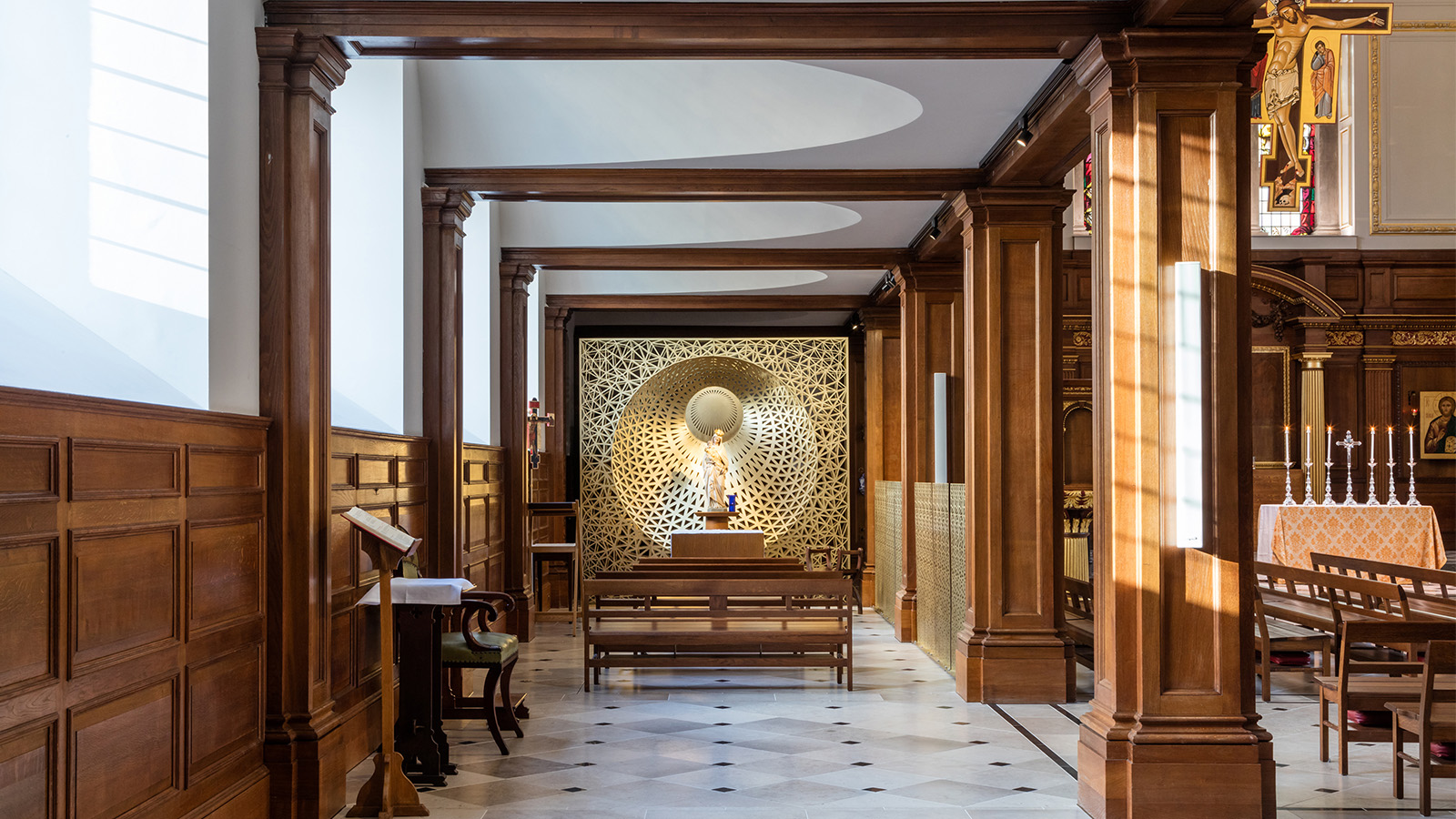
Saint Andrew Holborn has been brought into the 21st century, thanks to a sensitive redesign by architect DaeWha Kang. The structure is a heritage building from the late 17th century (rebuilt after damage during the Second World War) by Sir Christopher Wren and his largest parish church. The project implemented a restoration and redecoration programme for the beloved piece of religious architecture in central London, in close collaboration with St Andrew's Guild Church Council.
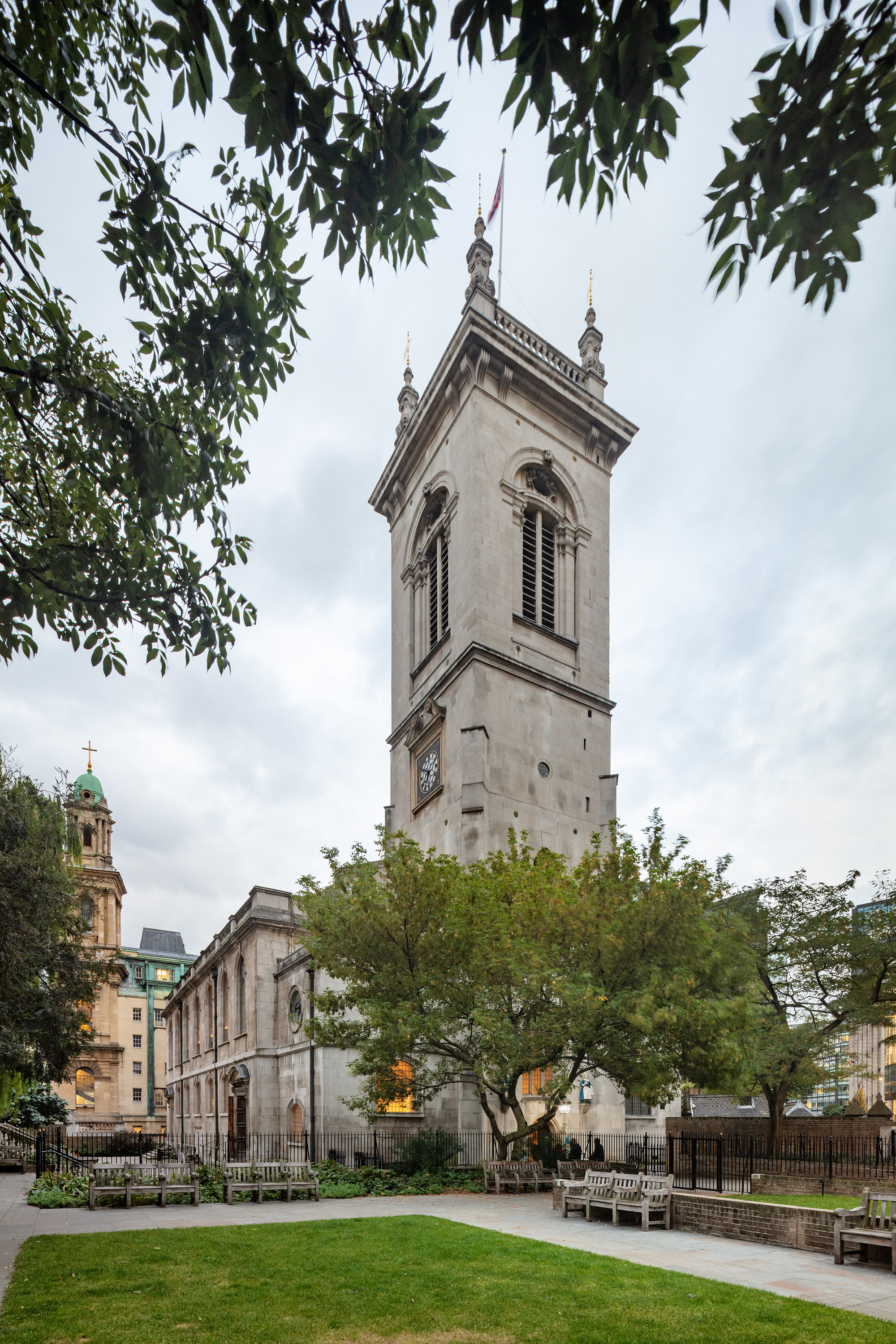
Inside London church Saint Andrew Holborn
Kang writes on the building's history: 'The church's interior, devastated during the Second World War, was reconstructed in the early 1960s by architects John Seely and Paul Paget. Over the last half-century, the Grade I-listed church suffered from a proliferation of clutter. At the same time, the evolution of the City of London into an office-centric zone and the subsequent decline in Saint Andrew Holborn's worshippers set the stage for a restoration that goes beyond surface-level improvements.'
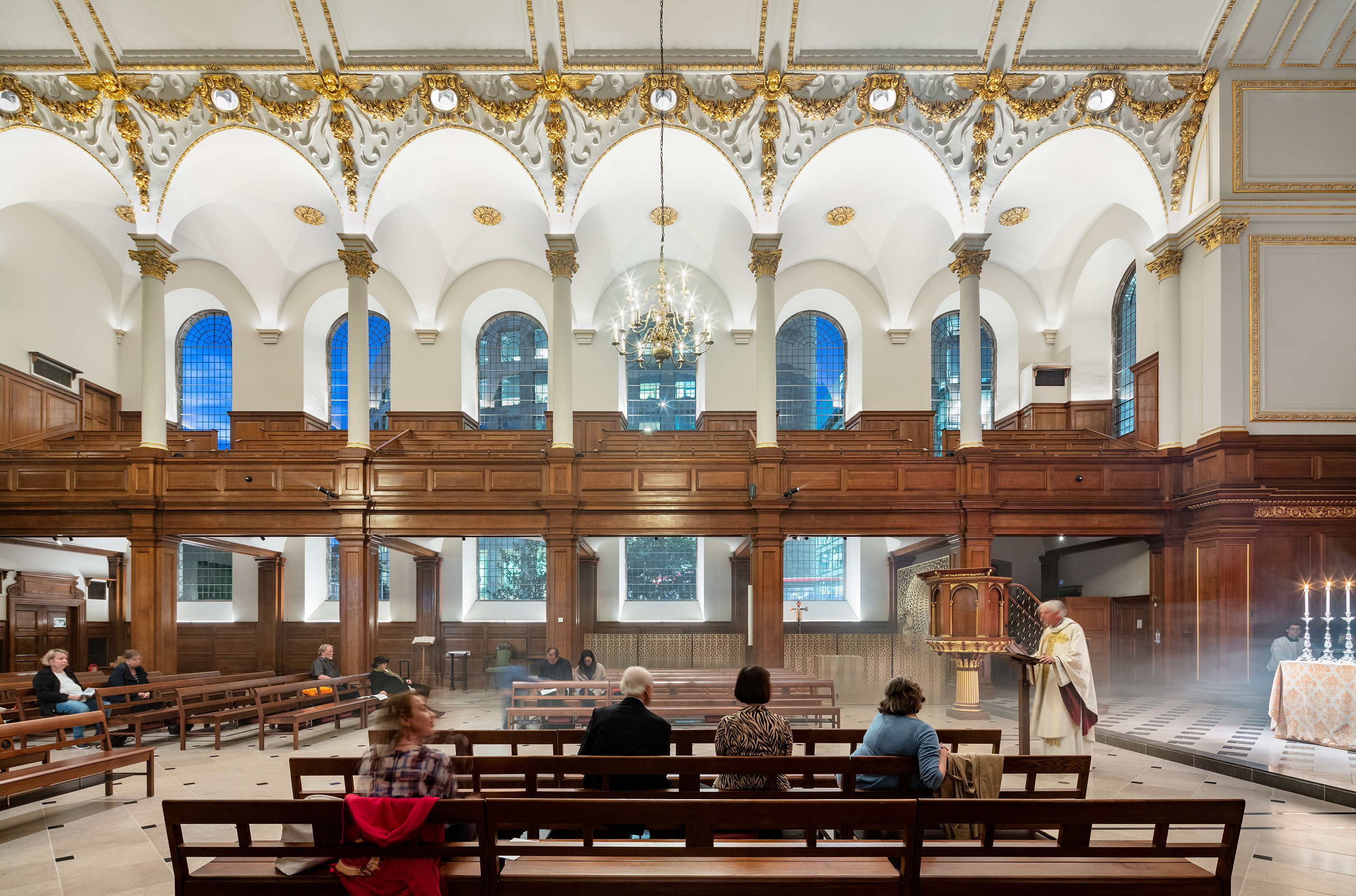
The design aimed at balancing the tightrope between offering spaces for contemplation and community, all in the context of a serene, intimate and sacred space. The redesign ensured all areas are fully accessible too.
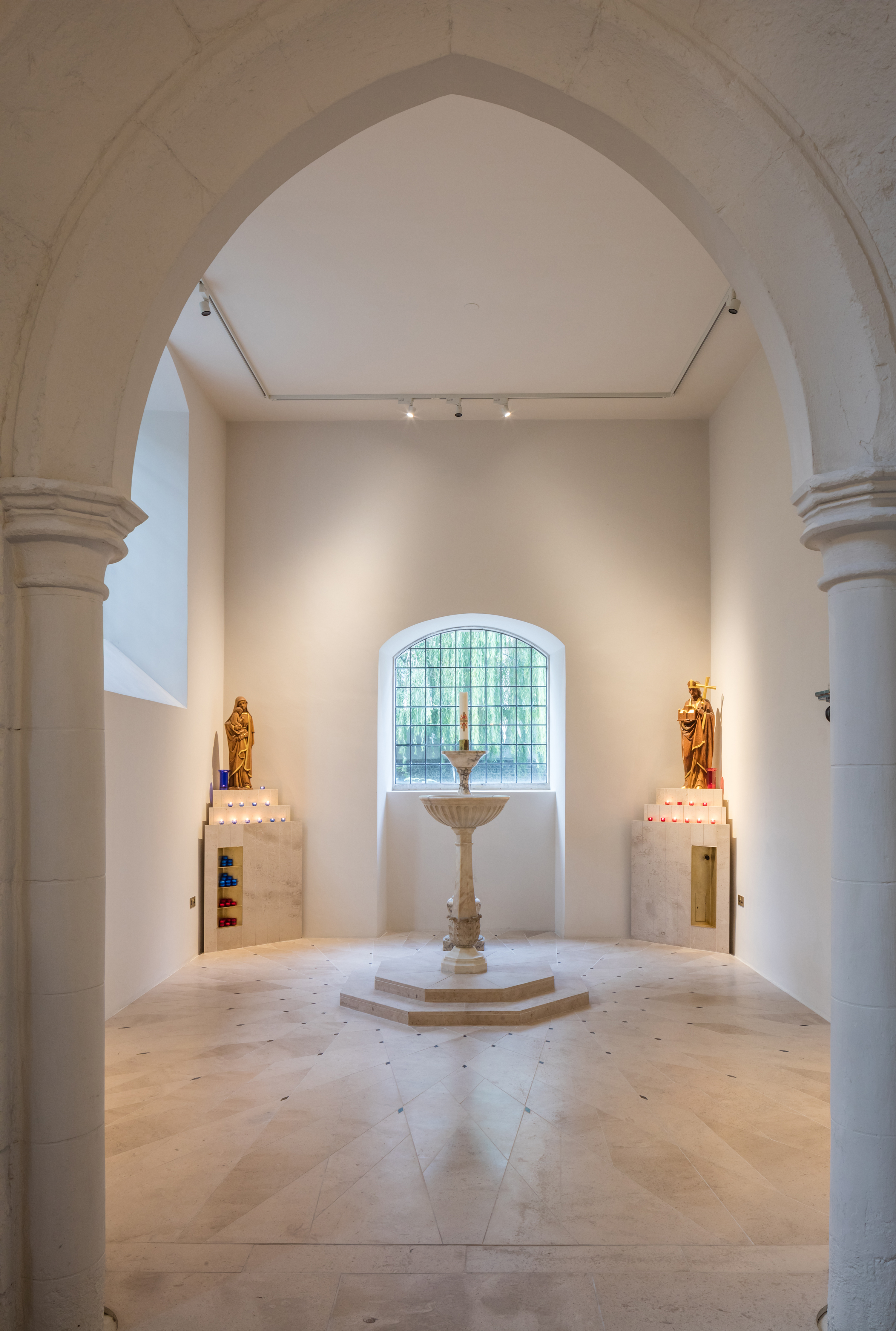
Among the new additions is the introduction of a baptistery chapel at the church's west end. Making use of a spring and a wealth of Roman artefacts discovered in a crypt under the site, Kang created a bespoke space for blessings and baptisms.
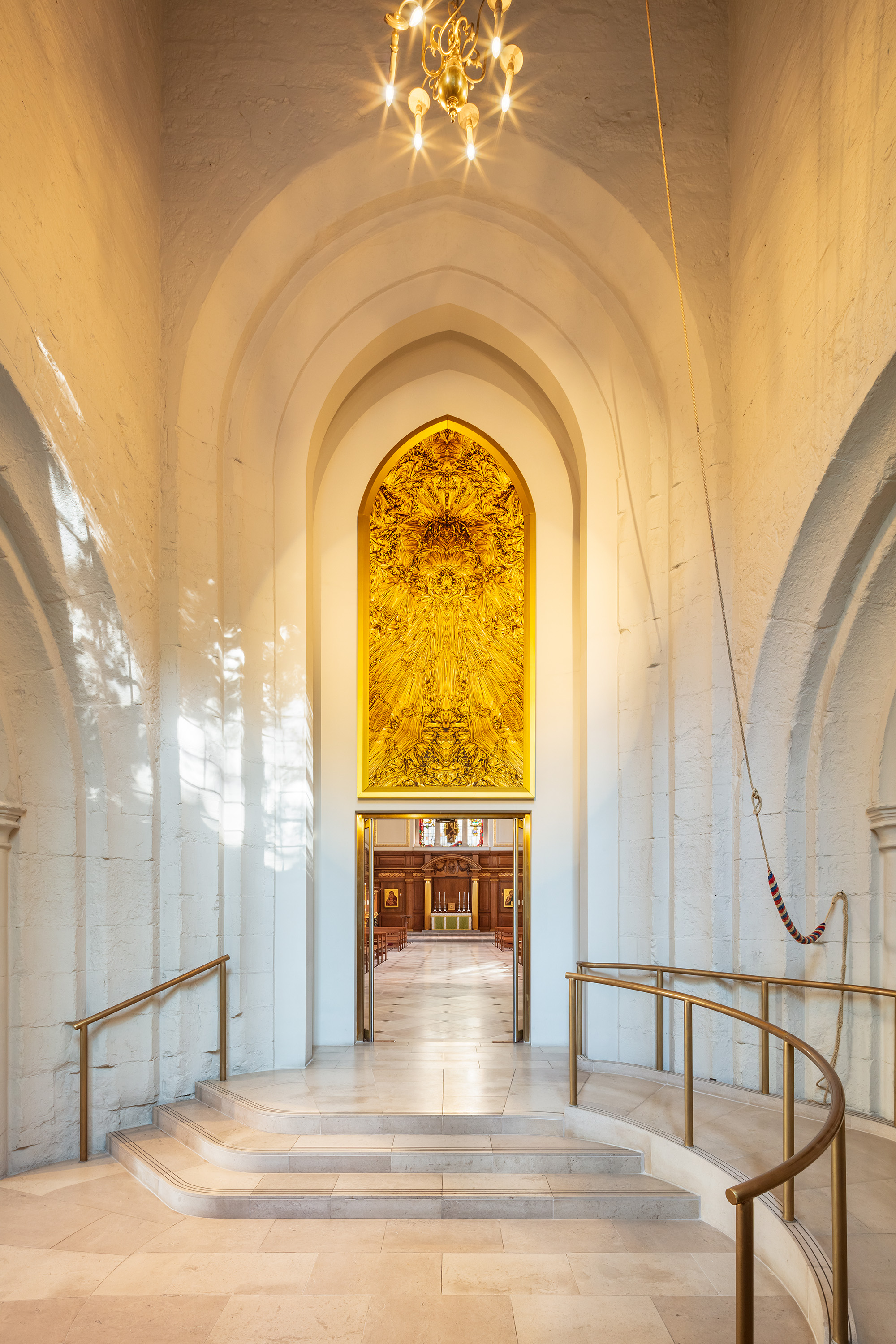
'The new baptistery incorporates a stone setting for the font with a paving pattern inspired by Wren's mathematical proofs for hyperboloid geometry. An octagonal step positions the font as the centrepiece, while smaller stone plinths at the chapel's perimeter create secondary focus points for prayer,' the architect writes.
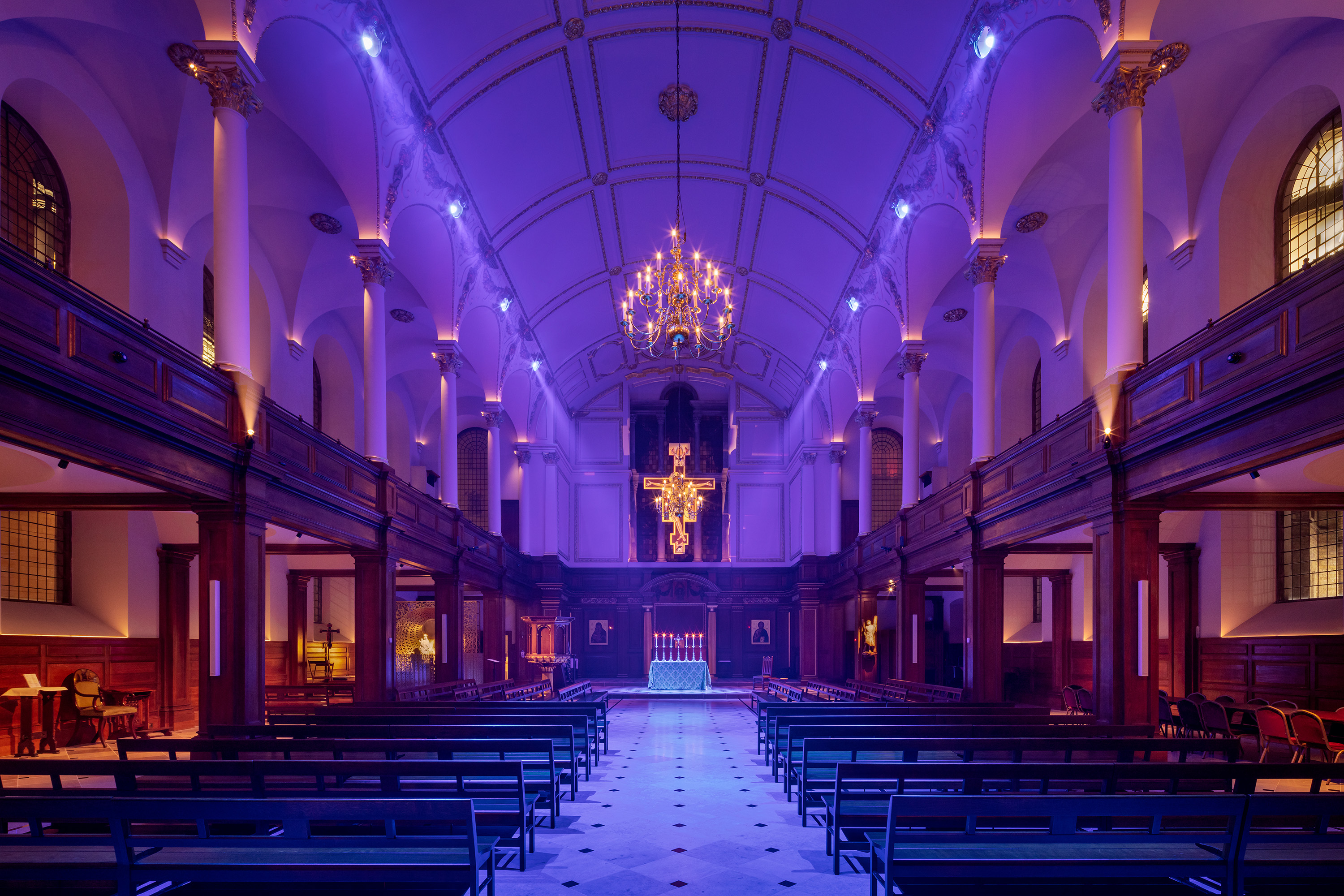
He continues: 'This serene space is open to the outside, welcoming members of the local community who seek respite from the stresses of everyday life and contemplate the longer arc of time captured in this sacred place.'
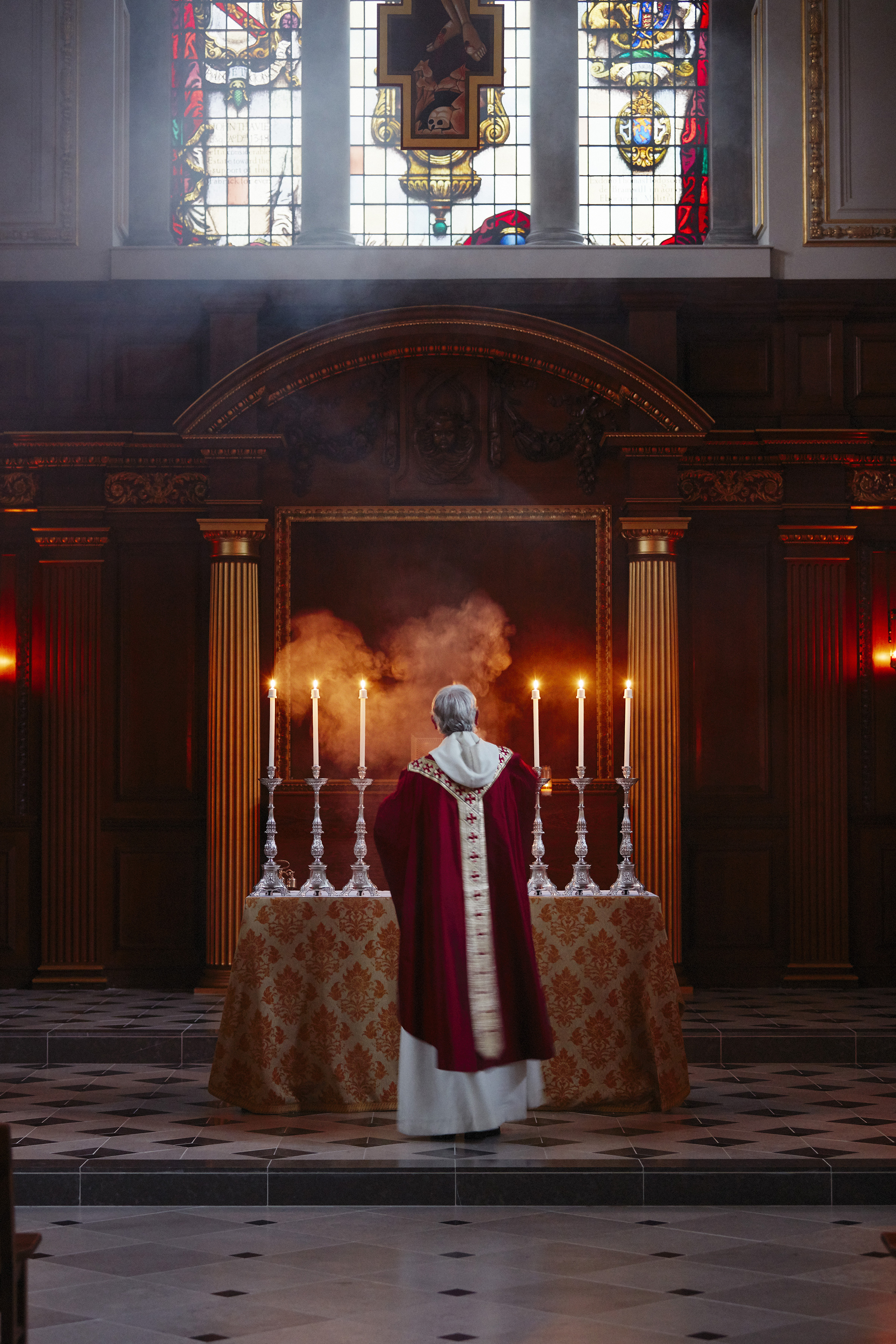
Elsewhere, sculptural brass screens, and ornamental timber panelling and metalwork offer strategic contemporary moments throughout. A key driver for the design solution was to avoid pastiche and ensure the old and new are clearly articulated and distinctive, the architect stresses.
Receive our daily digest of inspiration, escapism and design stories from around the world direct to your inbox.
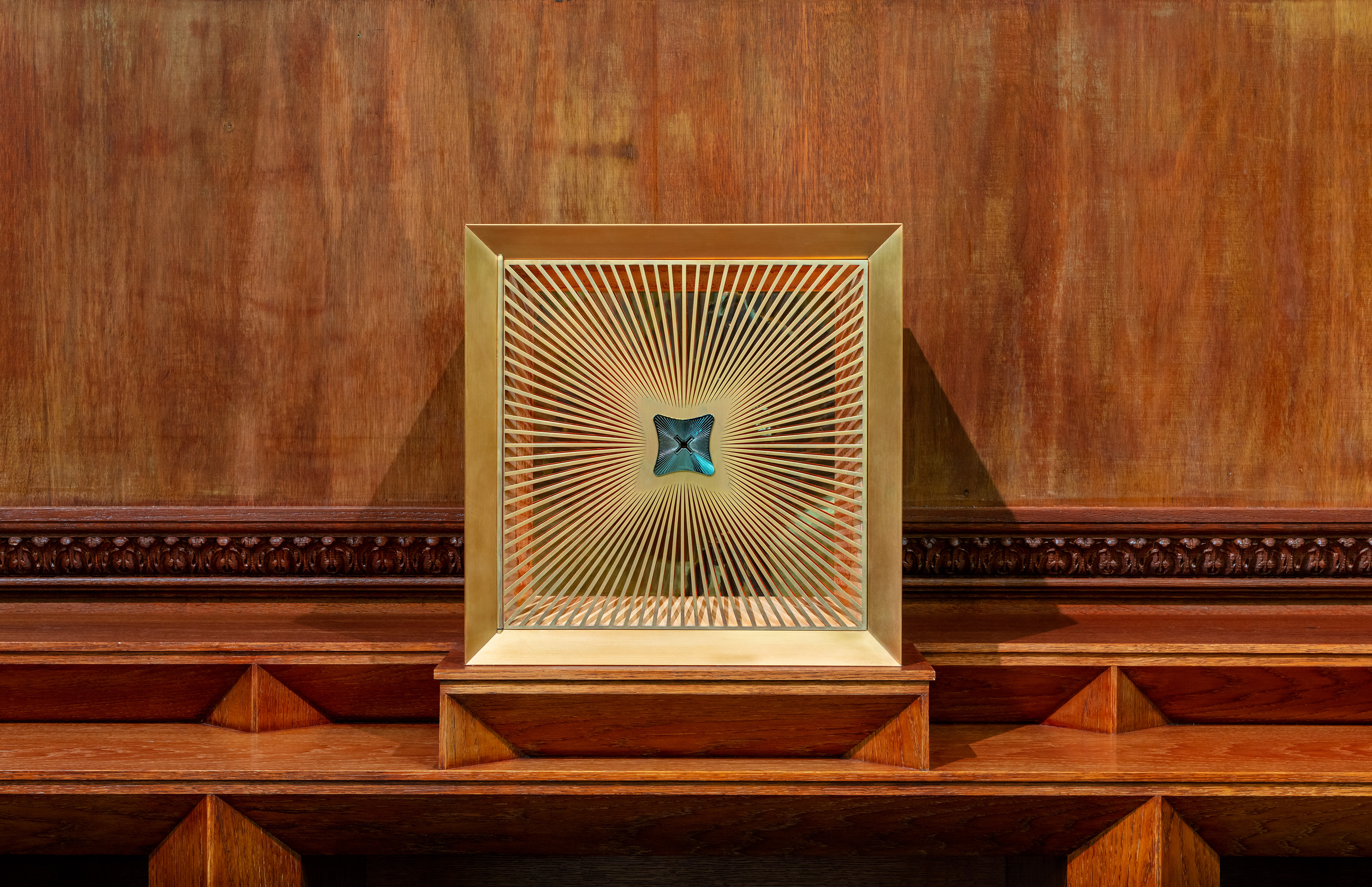
Meanwhile, in the central nave, a new digital lighting system enables the creation of diverse atmospheres to fit different ceremonies and uses. A bespoke approach such as this in other areas of the project allows flexibility and adaptability of the space to evolving needs – ensuring the church can serve its parish and community for years to come.
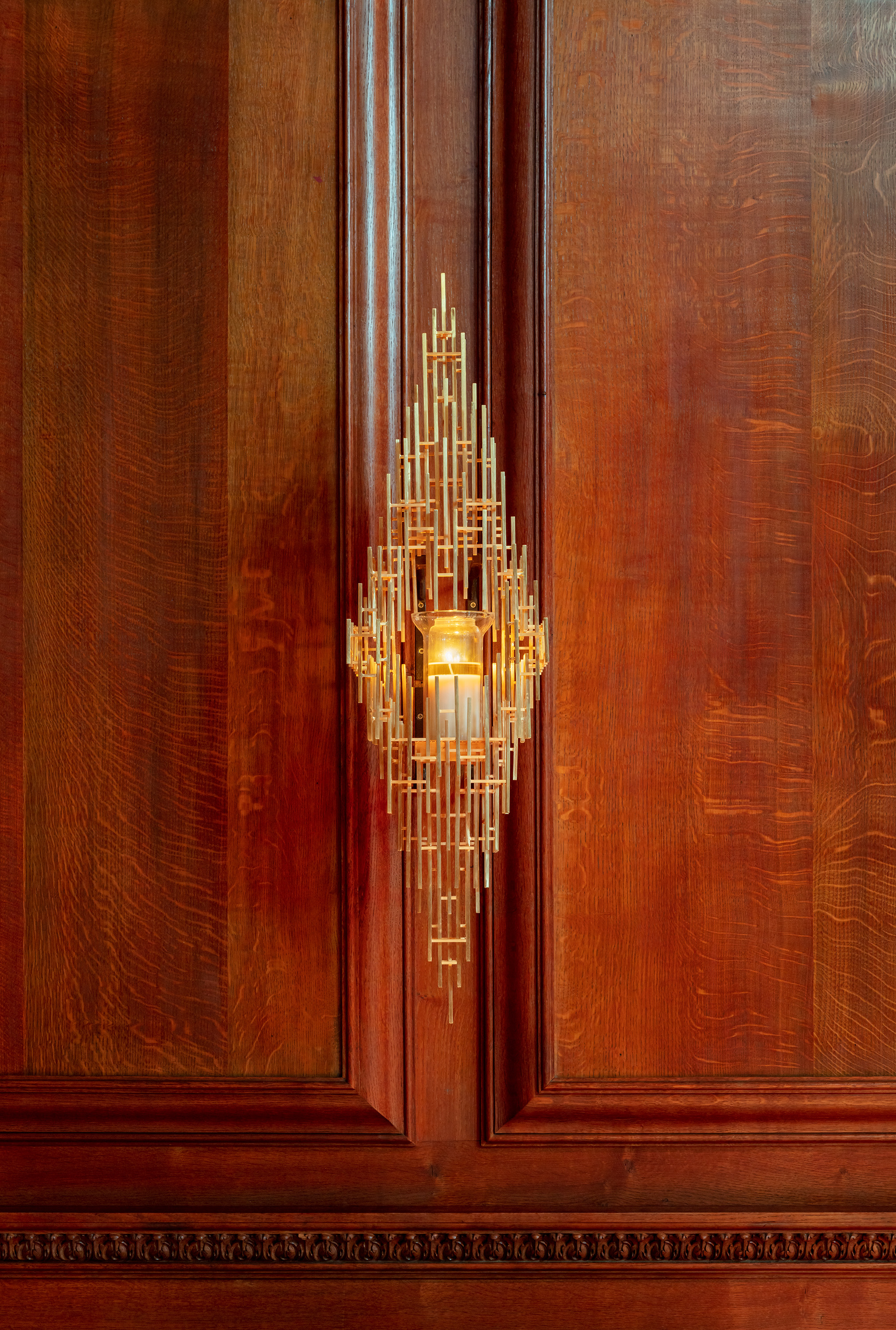
Ellie Stathaki is the Architecture & Environment Director at Wallpaper*. She trained as an architect at the Aristotle University of Thessaloniki in Greece and studied architectural history at the Bartlett in London. Now an established journalist, she has been a member of the Wallpaper* team since 2006, visiting buildings across the globe and interviewing leading architects such as Tadao Ando and Rem Koolhaas. Ellie has also taken part in judging panels, moderated events, curated shows and contributed in books, such as The Contemporary House (Thames & Hudson, 2018), Glenn Sestig Architecture Diary (2020) and House London (2022).
-
 Curvilinear futurism meets subtropical beaches at Not A Hotel’s ZHA-designed Okinawa retreat
Curvilinear futurism meets subtropical beaches at Not A Hotel’s ZHA-designed Okinawa retreatZaha Hadid Architects has revealed the design for the first property in Not A Hotel’s futuristic new Vertex collection, coming soon to southern Japan
-
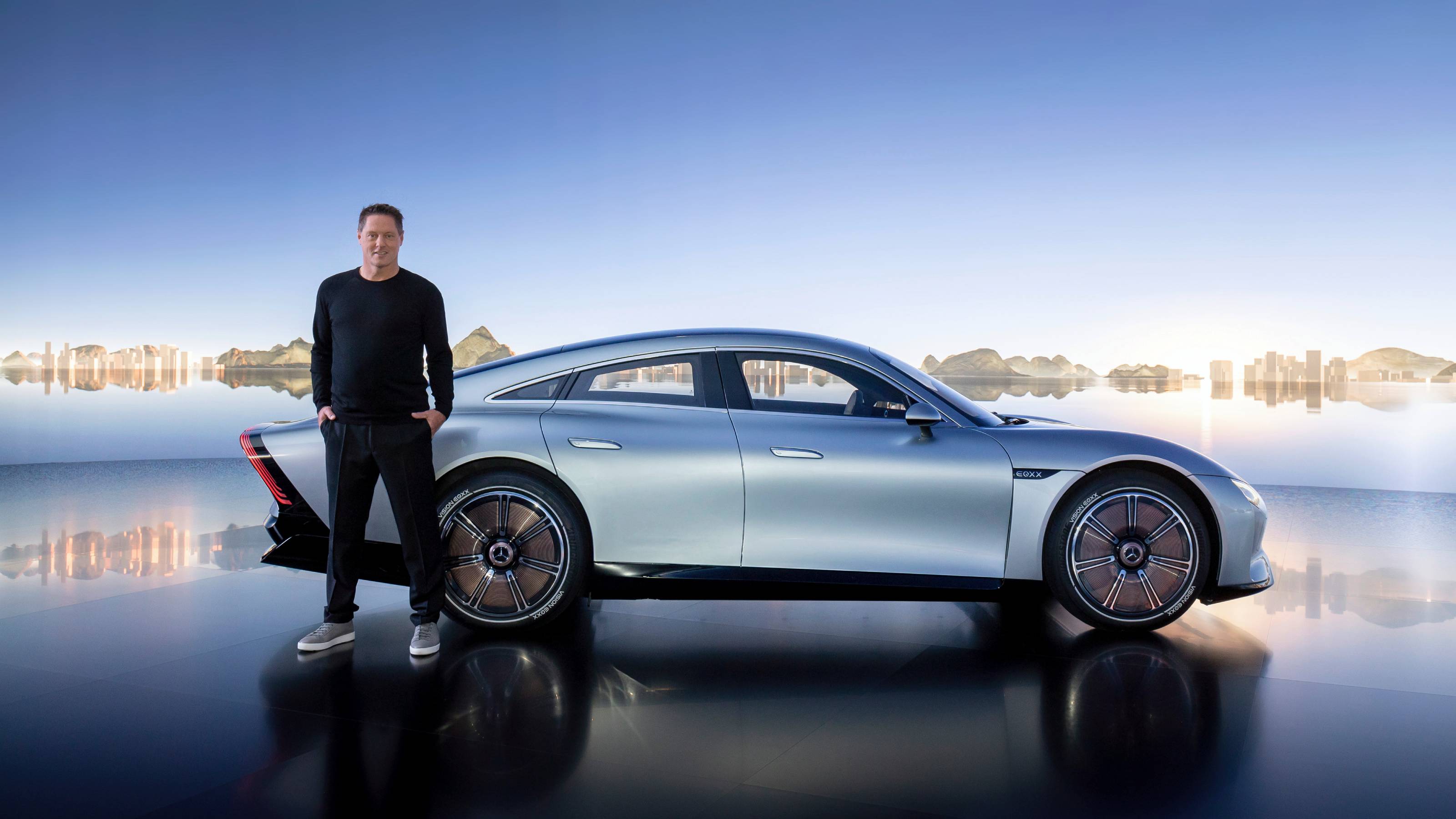 Gorden Wagener leaves the helm of Mercedes-Benz design after 28 years with the company
Gorden Wagener leaves the helm of Mercedes-Benz design after 28 years with the companyThe German designer is stepping down from the role of chief design officer at Mercedes-Benz. We look back at his influence and impact on the world of automotive and luxury design
-
 These Christmas cards sent by 20th-century architects tell their own stories
These Christmas cards sent by 20th-century architects tell their own storiesHandcrafted holiday greetings reveal the personal side of architecture and design legends such as Charles and Ray Eames, Frank Lloyd Wright and Ludwig Mies van der Rohe
-
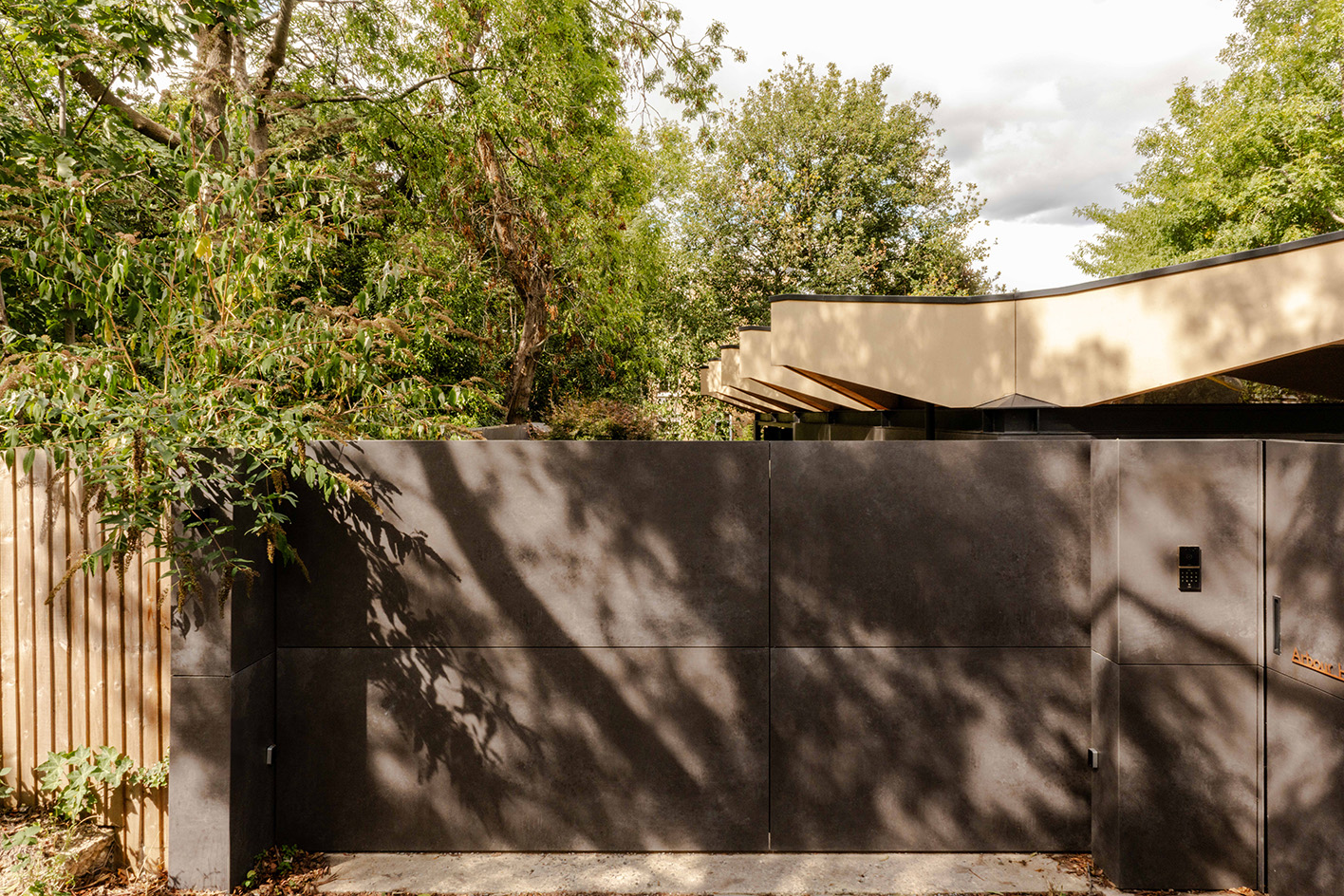 Arbour House is a north London home that lies low but punches high
Arbour House is a north London home that lies low but punches highArbour House by Andrei Saltykov is a low-lying Crouch End home with a striking roof structure that sets it apart
-
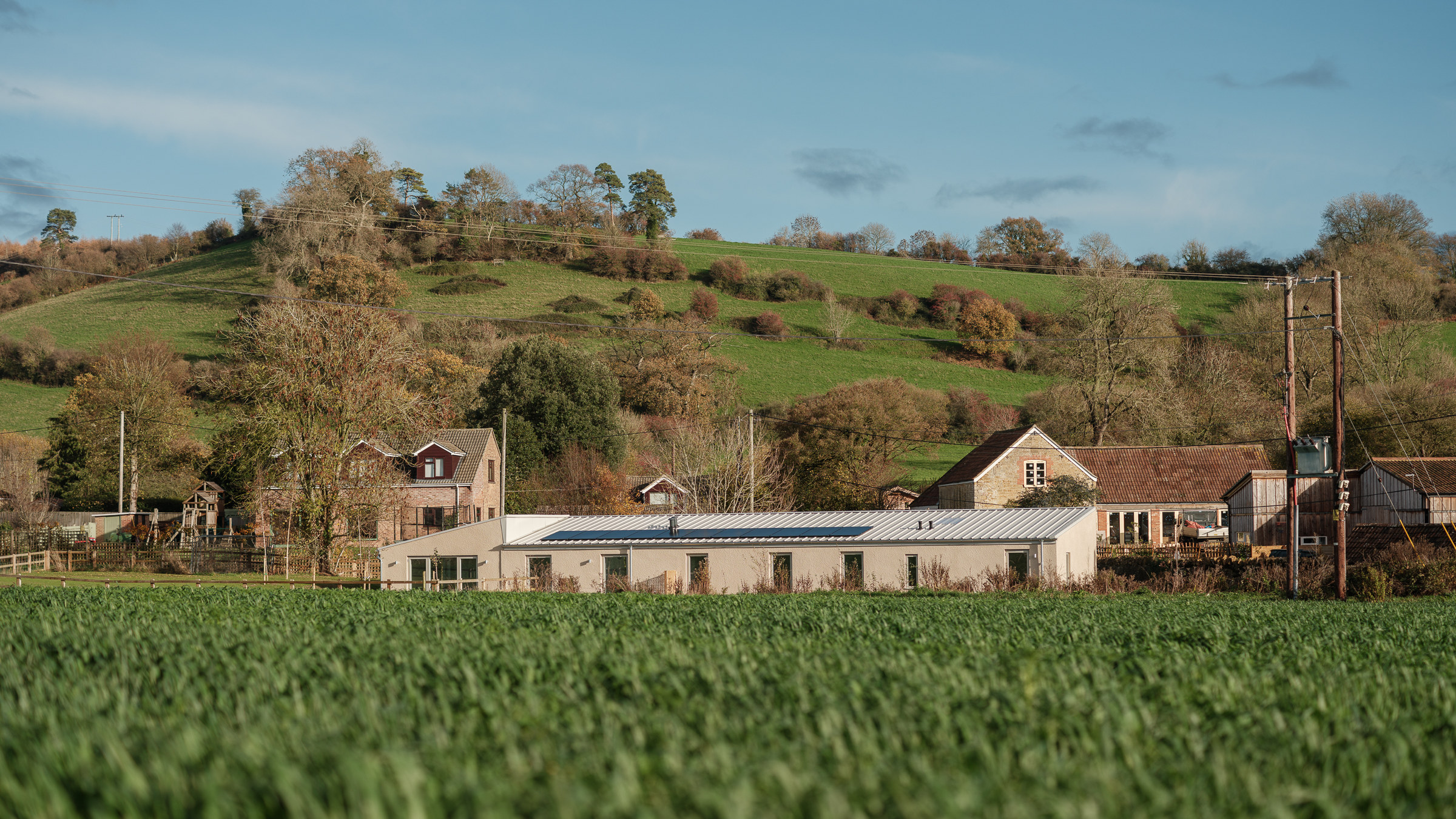 A former agricultural building is transformed into a minimal rural home by Bindloss Dawes
A former agricultural building is transformed into a minimal rural home by Bindloss DawesZero-carbon design meets adaptive re-use in the Tractor Shed, a stripped-back house in a country village by Somerset architects Bindloss Dawes
-
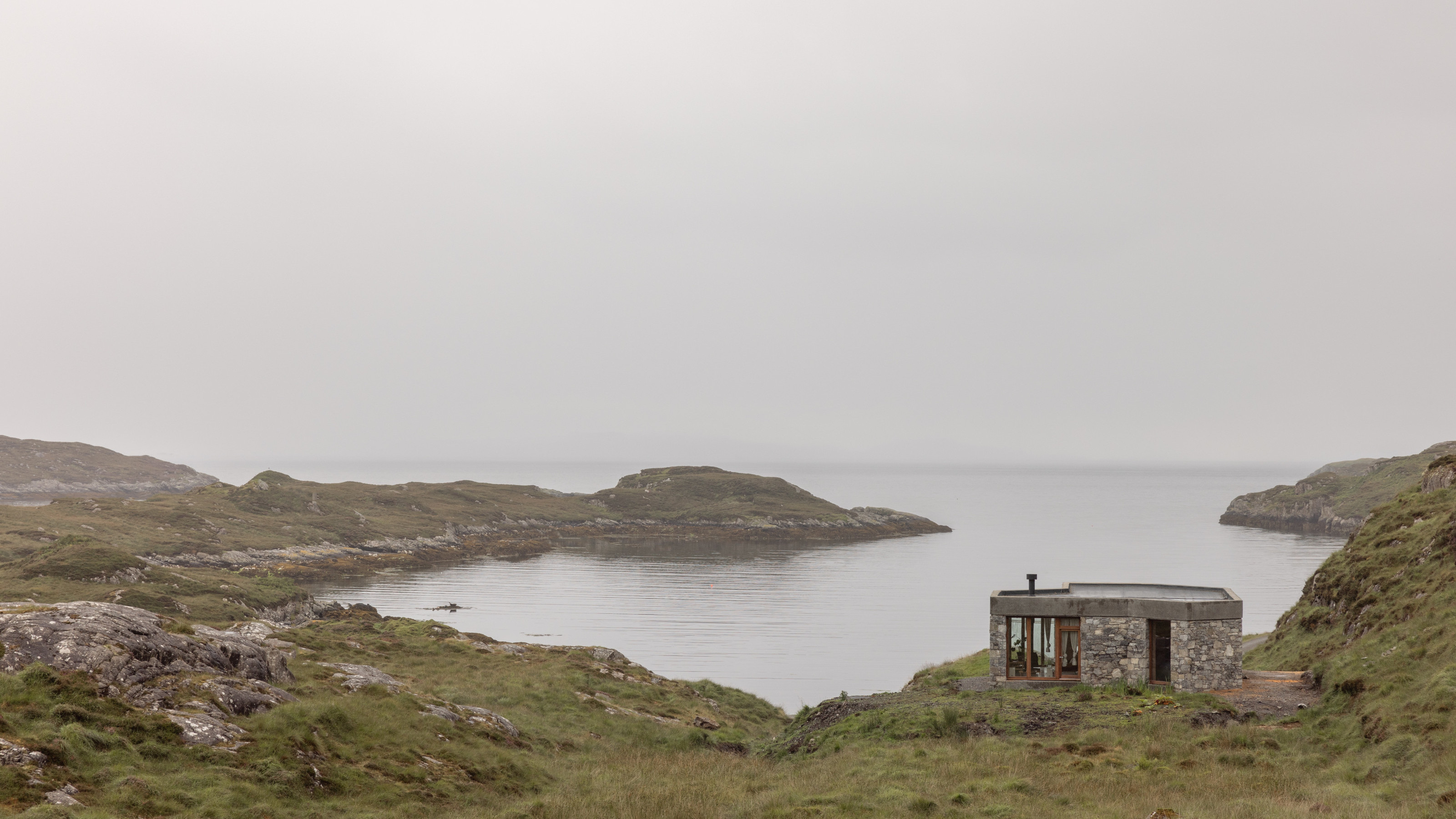 RIBA House of the Year 2025 is a ‘rare mixture of sensitivity and boldness’
RIBA House of the Year 2025 is a ‘rare mixture of sensitivity and boldness’Topping the list of seven shortlisted homes, Izat Arundell’s Hebridean self-build – named Caochan na Creige – is announced as the RIBA House of the Year 2025
-
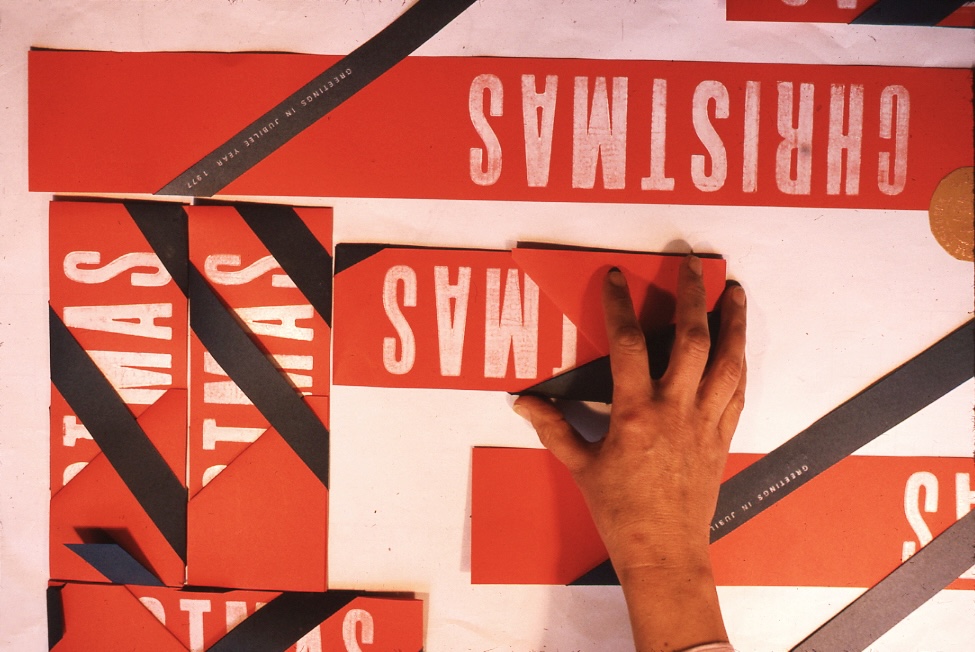 In addition to brutalist buildings, Alison Smithson designed some of the most creative Christmas cards we've seen
In addition to brutalist buildings, Alison Smithson designed some of the most creative Christmas cards we've seenThe architect’s collection of season’s greetings is on show at the Roca London Gallery, just in time for the holidays
-
 In South Wales, a remote coastal farmhouse flaunts its modern revamp, primed for hosting
In South Wales, a remote coastal farmhouse flaunts its modern revamp, primed for hostingA farmhouse perched on the Gower Peninsula, Delfyd Farm reveals its ground-floor refresh by architecture studio Rural Office, which created a cosy home with breathtaking views
-
 A revived public space in Aberdeen is named Scotland’s building of the year
A revived public space in Aberdeen is named Scotland’s building of the yearAberdeen's Union Terrace Gardens by Stallan-Brand Architecture + Design and LDA Design wins the 2025 Andrew Doolan Best Building in Scotland Award
-
 The Architecture Edit: Wallpaper’s houses of the month
The Architecture Edit: Wallpaper’s houses of the monthFrom wineries-turned-music studios to fire-resistant holiday homes, these are the properties that have most impressed the Wallpaper* editors this month
-
 A refreshed 1950s apartment in East London allows for moments of discovery
A refreshed 1950s apartment in East London allows for moments of discoveryWith this 1950s apartment redesign, London-based architects Studio Naama wanted to create a residence which reflects the fun and individual nature of the clients